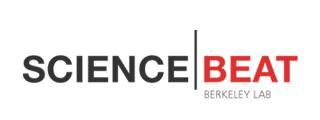

| November 26, 2003 | science beat | | lab a-z index | lab home |
 |
 |
||
|
|||
| Alcohol and Water Don't Mix | ||||||||||||||||||||
| Contact: Lynn Yarris, lcyarris@lbl.gov | ||||||||||||||||||||
Devotees of Scotch and water should be advised they may never attain the perfect blend. Scientists have used the Advanced Light Source (ALS) at Lawrence Berkeley National Laboratory to study the electronic states of methanol, the simplest of the alcohols, both in and out of solution with water; they have shown that, at the molecular level, alcohol and water don't completely mix. "Nobody has ever tasted a microscopically perfect mix of alcohol and water," says ALS scientist Jinghua Guo, one of the leaders of this research. "We found that the mixing of alcohol and water on the microscopic level is incomplete no matter how long you wait. However, the most important scientific message from our study is that we have established a tool to probe the molecular properties of liquids and solutions, something that until now has been difficult to obtain." Imbibers have long been combining alcohol and water in myriad beverage concoctions. Mixing wine with water was a custom of the ancient Greeks from at least Homer's time; in fact the Greeks thought drinking unmixed wine led to insanity. Scientists, for entirely different reasons, have spent the past four decades studying how alcohol and water mix at the molecular level. Alcohol in water is one of the fundamental liquid-liquid solutions endemic to countless chemical and biological processes. Until now, however, experimental data on the molecular properties that emerge from such solutions came primarily from neutron diffraction analysis and sent mixed messages. "Our knowledge about the geometry and electronic structure of molecules in the liquid phase has been very limited," says Guo. "Not only does the molecular arrangement change on a very fast time scale but the properties of the individual molecules are constantly changing."
One big mystery has been the fact that when alcohol and water mix, the disorder, or entropy, of the resulting system does not increase as expected for ideal solutions. At the microscopic level, a complete mixing of alcohol and water would entail the two molecules coming together at random to form a single liquid phase without interacting with one another. This means entropy for an alcohol-water solution should substantially increase over the entropy for pure acohol. To find out why it does not, Guo and his collaborators turned to the ALS — an electron accelerator and storage ring optimized for the production of x-ray and ultraviolet light, pulsed on a picosecond timescale. Working at an ALS beamline and experiment station known as the Soft-X-Ray Fluorescence Spectroscopy Facility, the collaboration studied the absorption and emission of low energy (soft) x-rays by liquid methanol in and out of solution with water. While methanol is not used in beverages, its molecular behavior when mixed with water is expected to be the same as that of ethanol, the drinkable form of alcohol. The results of this study were reported in the October 10, 2003 issue of Physical Review Letters. "We found that the structure of liquid methanol at room temperature is a combination of rings and chains, each made up of either 6 or 8 methanol molecules," Guo says. "When water is added, the methanol chains interact with water molecule clusters of different sizes. This bends the chains into stable open-ring structures. The formation of new ordered structures in which both water and methanol molecules take part means that the two liquids mix very little on the microscopic level."
Coauthoring the Physical Review Letters paper with Guo were Yi Luo, Stepan Kastanov, and Hans Agren from the Royal Institute of Technology in Sweden, Andreas Augustsson, Jan-Erik Rubenson, and Joseph Nordgren from Uppsala University in Sweden, and David Shuh of Berkeley Lab's Chemical Sciences Division. The Soft-X-Ray Fluorescence Spectroscopy facility, Beamline 7.0.1, is a collection of experimental stations which use light that is extracted from the stored ALS electron beam via an undulator magnet. This very bright, highly coherent, pulsed light is ideal for investigating the electronic, structural, and dynamic properties of molecules even when they are in the liquid state. In an earlier study, Guo and his collaborators had used the same ALS beamline to study the geometry and electronic structure of pure liquid water at room temperature. They found that water molecules formed cluster structures, with hydrogen bonds serving as the glue that holds these clusters together. These hydrogen bonds, however, rapidly break and reform, so that at any given moment there are "free-swimming" water molecules present in liquid water. Because these hydrogen-bonded clusters interact with methanol chains in alcohol and water solutions, there are never any free-swimming water molecules present. This helps explain why entropy decreases for such solutions. "The rings formed when alcohol and water are mixed are stable structures because the hydrogen bonds are saturated," says Guo. "One would expect to see even further reductions in the entropy of the system if there were more methanol and water molecules forming highly ordered structures." So does this mean that those who like their Scotch mixed with water can never hope to achieve the perfect blend? It is difficult to say, according to Guo. "If we mix alcohol and water at an elevated temperature, we may expect to see different molecular structures in the mixture," says Guo. "Many years ago, researchers used lasers to induce reactions in liquors and were able to alter the smell for a short time. However, I am not sure people ever tasted such a liquor." Additional information
|
||||||||||||||||||||
| Top | ||||||||||||||||||||